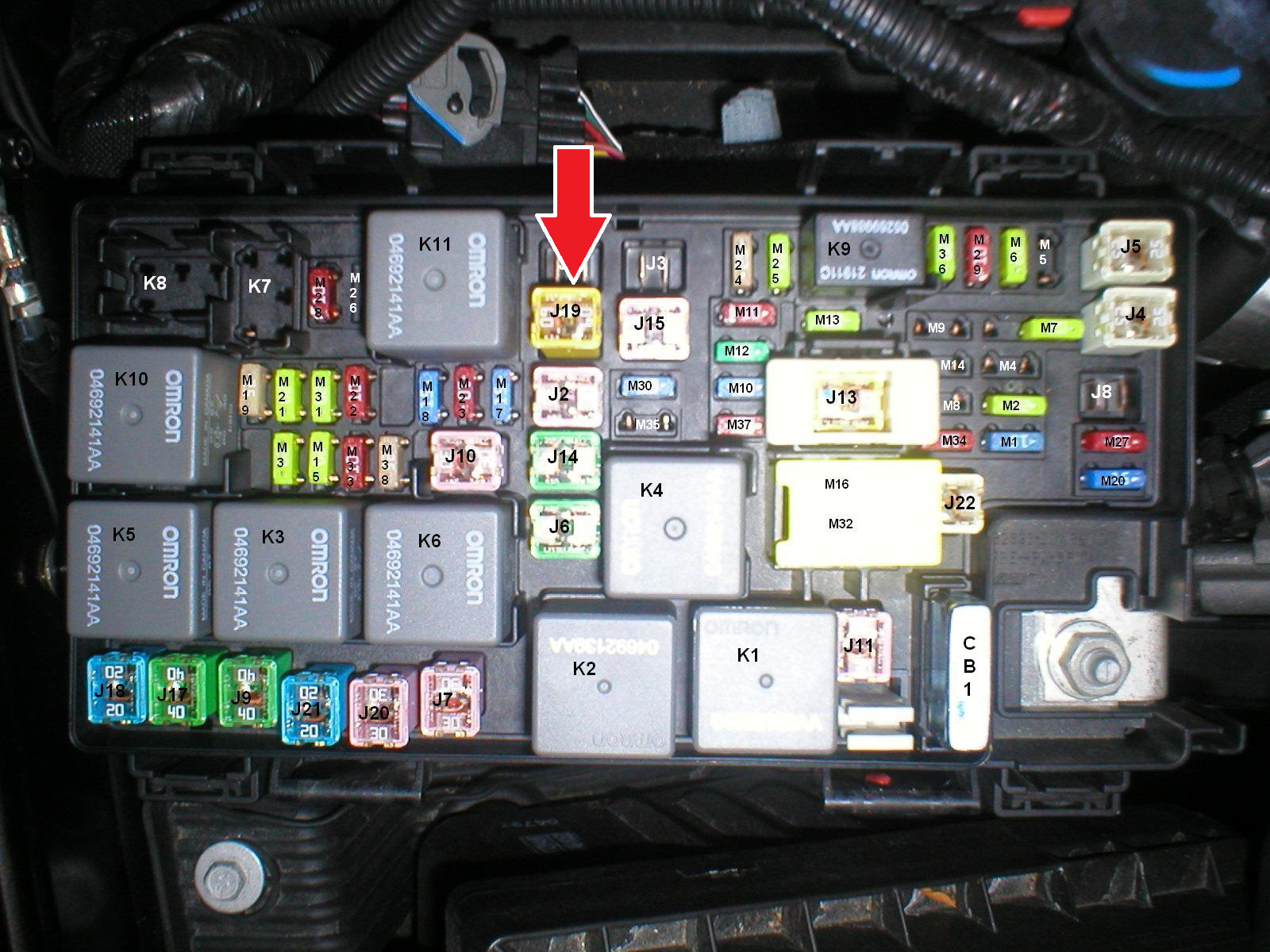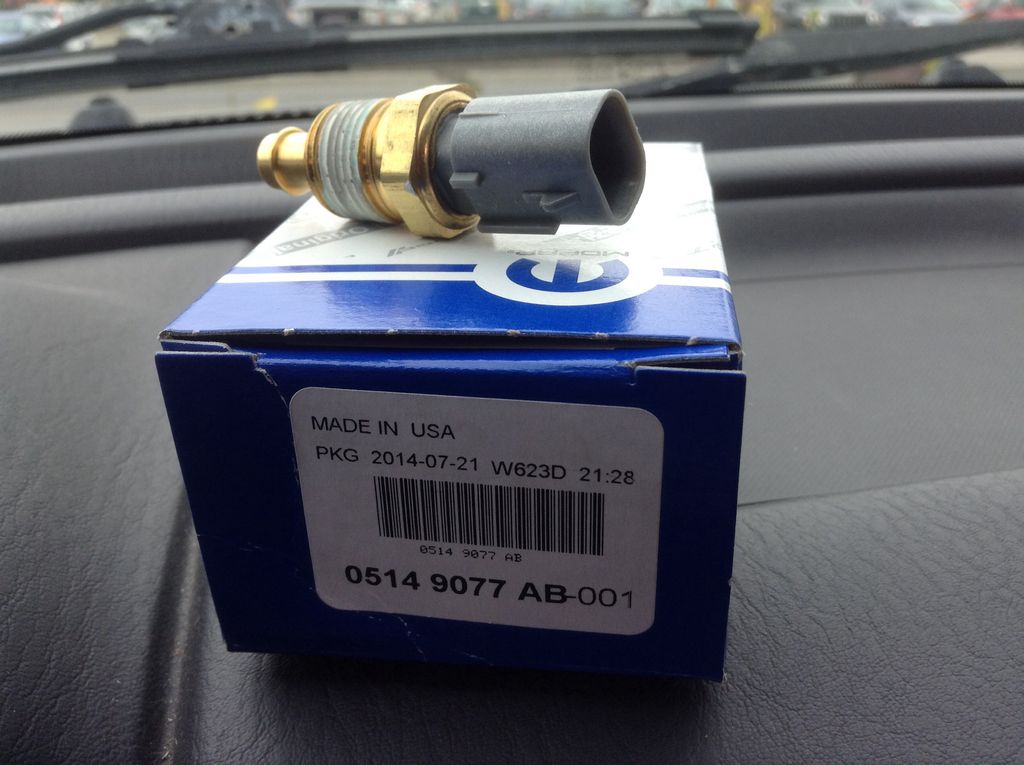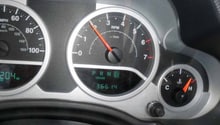Jeep Wrangler JK: Why Does My Cooling Fan Not Work?
The OEM equipped fan on the JK Wrangler is a known weak link that can easily fail for a variety of reasons. While the Wrangler is touted as a vehicle that can traverse the toughest of terrains, the cooling fan is not sealed from the elements and can easily ingest foreign material, leading to fan failure. While the vast majority of fan related issues are indeed from a failed cooling fan, it is always a good idea to check components related to fan operation to ensure unnecessary money isn't spent replacing a perfectly good fan.
This article applies to the Jeep Wrangler JK (2007-Present).
A malfunctioning cooling fan is a common problem on JK Jeep Wrangler models. The electric fan equipped from the factory has been known the be quite fragile and has failed on a number of Jeeps that see any kind of off-road duty. The fan motor is not sealed, so ingestion of any foreign material is a surefire way to kill your fan in a hurry. A malfunctioning cooling fan will not draw sufficient air through the radiator, leading to engine overheating and potential engine damage. Fortunately, sealed aftermarket fan motors are inexpensive and can be easily installed to allow miles of worry-free driving. Before assuming your OEM fan has gone kaput, a quick inspection of the fan and its related components can indicate why your fan may not be working properly. This article will outline several common components that may be causing your JK's cooling fan issues.

Materials Needed
- Digital multimeter
- Jumper wires
- Garden hose/pressure washer (for cleaning)
Step 1 – Clean any debris
Before beginning diagnosis for a faulty cooling fan, ensure the fan and radiator are free of excessive dirt, mud, or debris. Many JK owners regularly take their Wrangler off-road and often drive through some rugged terrain. Unfortunately, while the Wrangler can traverse heavy mud, deep water, and sandy/dusty trails with ease, the cooling fan and radiator can often become compacted with muck and disrupt normal cooling operation. The electric fan can easily lock-up from any obstruction or short out from water ingestion. So, before tearing into your Jeep, make sure the cooling fan is clean, and has had adequate time to dry out.

Pro Tip
Spinning the fan by hand can give you a general idea of the fan motor condition. The fan should spin a few revolutions before coming to a slow stop. If the fan feels gritty or does not spin freely, the fan motor may be bad.
Step 2 – Inspect fan fuse
If the fan was submerged in water or packed full of mud/dirt, it is possible that the windings in the fan motor shorted out and blew a fuse. Similarly, the windings in the fan motor can melt and create excessive resistance, thus the computer will attempt to bump up the fan speed to compensate. As a result, the circuit becomes overloaded and blows the fuse. Check the cooling fan fuse in the Totally Integrated Power Module (TIPM) located under the hood. By removing the fuse, you can easily inspect if it is blown. If the fan was locked-up for only a short period of time, replacing a blown fan fuse will typically restore functionality. A JK that keeps blowing the fan fuse is often a sign of a damaged fan motor that should be replaced.

Pro Tip
The OEM fan motor is not sealed and can ingest water and debris, leading to corrosion and eventual fan failure.
Step 3 – Inspect fan relay(s)
It is always a good idea to inspect the fan relay(s) whenever the cooling fan is acting up. Relays are small electromagnetic switches that essentially transfer power from one circuit to another. Whether it be from exposure to temperature extremes or general wear, relays can begin to malfunction and "switch" intermittently, or flat out fail and stick in an open/closed position. The same relays are used throughout the TIPM, so swapping a fan relay with another relay and monitoring fan operation can indicate a faulty relay. Also, check the relay terminals and contacts to ensure they are not burnt or melted. Relays can also be tested using a battery and digital multimeter as shown in the video below.
Related Video: DIY How to Test Relays
Pro Tip
2007 to 2011 JKs use two different fan relays: the low speed relay is located in the TIPM at terminal K11 (see Figure 2), whereas the high speed relay is behind the driver's side headlight.
Step 4 – Temperature sensor
The Engine Coolant Temperature Sensor (ECT) is responsible for relaying coolant temperatures to the computer, which will activate the fan as necessary to keep coolant temperatures within an acceptable range. A lack of cooling fan functionality, or intermittent fan operation, can be caused by a faulty ECT sensor. An ECT sensor that is reading below the true value of the engine coolant temperature will not activate the cooling fan, nor will it trigger a cooling fan fault code. Wranglers built up until 2012 came equipped with a plastic ECT sensor that seemed to fail at an incredibly high rate, so Chrysler switched to an improved brass unit as pictured below. For approximately $30, it is not a bad idea to replaced this sensor every few years to ensure the engine coolant temperature is being measured correctly.

Step 5 – Testing fan
Applying 12 volts from a battery directly to the fan can give you an idea if the fan is functional. If the fan fails to operate when voltage is supplied, this confirms that a replacement fan is needed. If the fan operates with power supplied, measuring amperage draw with a digital multimeter can indicate whether or not the fan has an excessive draw that could be overloading the circuit. As previously mentioned, a fan motor with burnt or melted windings can have excessive resistance and be the cause of regular fan fuse failure.

Related Discussions
- Cooling Fan Not Working - HELP! - JK-Forum.com
- Cooling Fan Failure - Diagnostic Help - JK-Forum.com
- Radiator Fan Issues - JK-Forum.com





